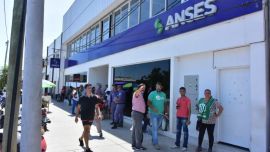President Javier Milei’s government on Thursday announced electricity bill hikes of up to 150 percent for consumers in the Buenos Aires Metropolitan Area (AMBA, in its Spanish acronym) with monthly updating from April.
There will be lower percentages of 70 and 65 percent respectively for Edenor and Edesur clients in low-income (catalogued as N2) and middle-income (N3) sectors, although the latter will be subject to an increase of 130 percent if consumption tops 600 KW/H, Energy Secretary Eduardo Rodríguez Chirillo said in a press communiqué.
As for high-income clients, "considering an average consumption of 380 KW/H per month, in the case of N1 users, a bill of 13,900 pesos will go up to 34,332 pesos, representing an increase of 150 percent."
The new rates will last until the integral review for the 2024-2028 five-year period is completed, while as from April there will be a monthly updating mechanism based on inflation, the Energy Secretariat said.
The government’s intention is not to let the billing fall behind with the objective of reducing subsidies as part of the Economy Ministry’s drive for a balanced budget.
The increases will be effective once the respective resolutions are published in the Official Gazette, which should happen imminently.
“For N2 consumers, the [average] bill will pass from 4,360 to 7,415 pesos, representing an increase of 70 percent while for N3, it will pass from 4,783 to 7,850 pesos, equivalent to a difference of 65 percent. But should consumption reach 600 KW/h, the sum will go up 14,600 to 34,000 pesos, or a difference of 130 percent,” detailed the state communiqué,.
It further explained that no single general increase had been proposed because consumers had already been segmented into the Nivel 1 (with monthly incomes topping two million pesos), Nivel 2 and N3 income groups with the latter two segments possessing lower purchasing-power assisted up to a consumption of 400 KW/h.
The higher rates for N1 are designed to encourage wealthier consumers “to make a responsible and efficient use of energy.”
The virtual freeze of electricity billing by the previous government had implied an ever greater transfer of subsidies which the new government seeks to correct. Obviously this will hit consumer pockets in the short term.
Last year economic subsidies reached 2.1 percent of Gross Domestic Product, to which the energy sector contributed 1.6 percent, representing approximately US$9.683 billion, according to the estimates of the International Monetary Fund (IMF) and Economía & Energía consultancy firm.
This year’s objective is to reduce these subsidies to 1.3 percent of GDP in general terms and 1.1 percent specífically in the energy sphere.
IMF experts in their Staff Report have suggested billing increases of over, 200 percent for electricity and 150 percent for gas as from this month.
But the government opted for prudence, deciding to postpone any increases until after a new public hearing to define the “Canasta Básica Energética” (CBE) yardstick on behalf of that 70 percent of the population whose incomes fall below 3.5 CBEs.
As from April or May, the introduction of a new scheme is planned to replace the current segmentation, centring the subsidies on homes whose energy spending tops 10 percent of their incomes with state support focusing on the sum above that percentage to provide financial relief.
– TIMES/NA






















Comments